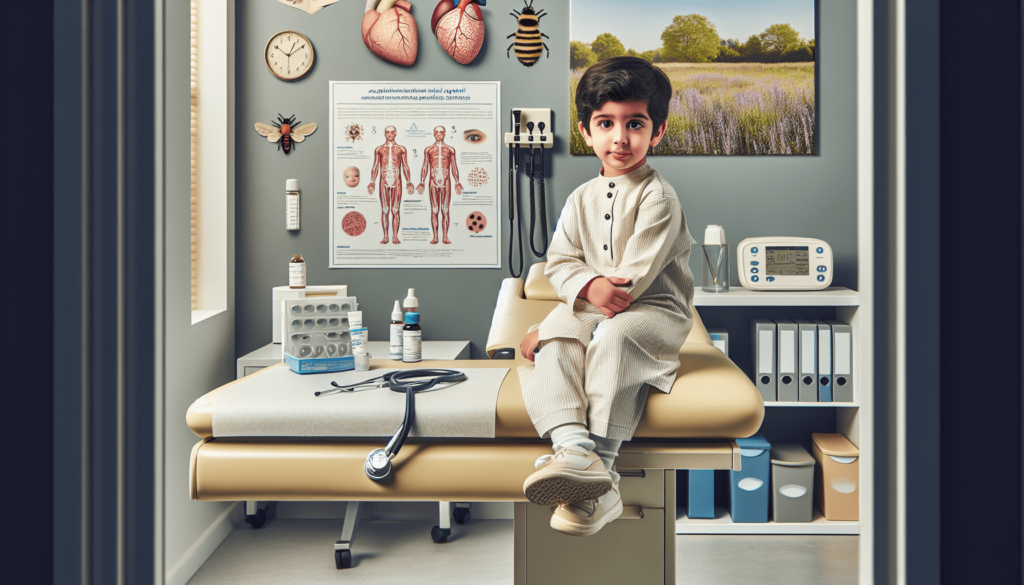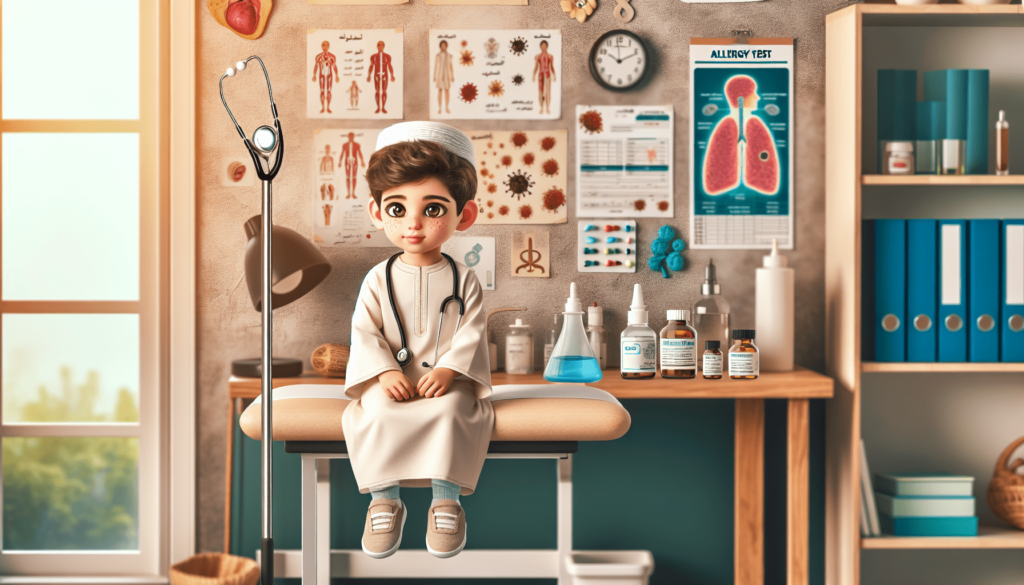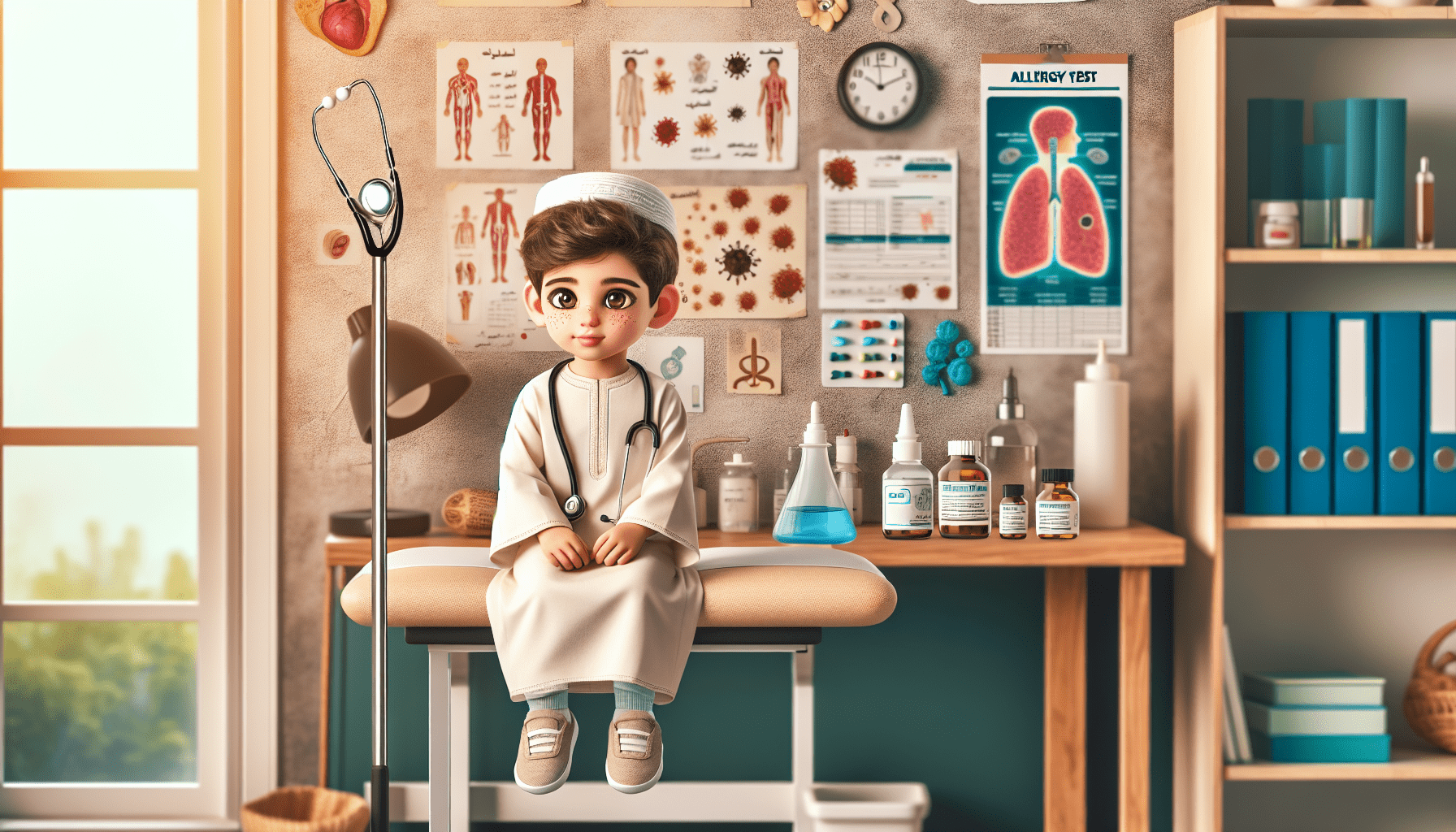When it comes to understanding what’s making your child sneeze, itch, or break out in rashes, child allergy testing can provide the answers you need. In the article “Child Allergy Testing: What to Expect for Your Child,” you’ll get a clear sense of how these tests work, what types of allergies can be detected, and how to prepare your little one for the process. This guide aims to demystify the experience so both you and your child can approach it with confidence and ease. Have you ever found yourself concerned about your child’s sneezes, rashes, or unexplained tummy aches? Understanding what’s behind your child’s symptoms can be daunting. Allergy testing can provide valuable answers and a path forward. But what exactly does child allergy testing entail, and what can you expect as a parent?
Child Allergy Testing: What To Expect For Your Child
Identifying allergies early can significantly improve your child’s quality of life. From seasonal allergies to food intolerances, correct diagnosis paves the way to effective management and relief.

Why Allergy Testing is Important
Allergic reactions can range from mild to severe and can significantly disrupt your child’s daily activities. Understanding the root cause can help prevent future issues and guide you towards appropriate treatments. Here’s why testing is crucial:
- Identify Triggers: Accurately identifying what your child is allergic to can prevent exposure to allergens.
- Prevent Severe Allergic Reactions: Knowing potential triggers helps avoid severe reactions, which can sometimes be life-threatening.
- Improve Quality of Life: Proper diagnosis and treatment can alleviate symptoms and vastly improve day-to-day comfort.
- Customized Treatment Plans: An accurate diagnosis allows healthcare providers to create a tailor-made treatment plan for your child.
Types of Allergens
Allergens come in many forms. Here are some of the most common:
| Type of Allergen | Examples |
|---|---|
| Food Allergens | Peanuts, tree nuts, milk, eggs, shellfish |
| Environmental Allergens | Pollen, mold, pet dander, dust mites |
| Contact Allergens | Latex, certain metals like nickel, fragrances |
| Medication Allergens | Penicillin, aspirin |
| Insect Allergens | Bee stings, wasp stings |
Knowing the type of allergen your child might be reacting to can help determine the testing method.
Initial Consultation and History
Before diving into tests, the first step is a comprehensive initial consultation. This involves:
- Medical History: Your child’s medical background, including any known allergies, family history, and details of the symptoms.
- Symptom Diary: Documenting when symptoms occur can offer valuable insights. Note the time of day, as well as any potential triggers or patterns.
- Physical Examination: Depending on the symptoms, the doctor might examine the skin, nose, throat, and lungs for signs of allergic reactions.
This initial assessment helps your healthcare provider recommend the most suitable allergy tests.
Types of Allergy Testing
Allergy tests come in various forms, and each type serves a different purpose. Below are some common ones:
Skin Prick Test
This is one of the most common allergy tests for children. A small amount of the suspected allergen is placed on the skin (usually the forearm or back). The skin is then pricked lightly so the allergen can enter just below the surface.
- Duration: 20-40 minutes
- Pain Level: Minimal; feels like a tiny pinprick
- Accuracy: High for environmental allergens
Results appear as a localised reaction, such as redness or swelling, indicating an allergy.
Intradermal Test
Similar to the skin prick test but involves injecting a small amount of allergen just under the skin. This test is more sensitive and is often used if the skin prick test is inconclusive.
- Duration: 30-60 minutes
- Pain Level: Slightly more than a skin prick
- Accuracy: High, especially for insect venom and drug allergies
Patch Test
This test is used to find out if a skin condition, such as eczema, is caused by contact allergies. Patch tests involve placing small patches with allergens on the child’s back. They remain there for 48 hours, and the skin is checked for reactions at 72-96 hours after placement.
- Duration: Multiday (48 hours patches + 24-48 hours post removal)
- Pain Level: None, but potential itching or discomfort
- Accuracy: High for contact allergens
Blood Tests
When skin tests aren’t an option, blood tests (like the RAST or ELISA tests) can measure the immune system’s response to specific allergens.
- Duration: Few minutes to draw blood; results can take a few days
- Pain Level: Slight discomfort from needle prick
- Accuracy: Useful when other tests aren’t feasible
Blood tests are particularly good for children with extensive eczema or those unable to stop taking antihistamines.
Preparing Your Child for the Test
Preparation is key to making the testing process smooth. Here are some tips:
- Explain the Process: Use simple language to describe what will happen. Assure them it will be quick, and you will be there the whole time.
- Avoid Certain Medications: Some medications, like antihistamines, can affect test results. Your doctor will give you a list of medicines to avoid beforehand.
- Comfort Items: Bring a favorite toy or book to comfort them during the test.
What Happens During the Test
Knowing what to expect can ease both your and your child’s anxiety. For skin tests, your child will be asked to lie down or sit comfortably. The nurse will clean the test area before applying the allergens. For blood tests, a small amount of blood will be drawn usually from their arm.

Interpreting Test Results
After the test, your healthcare provider will review the results with you. Understanding what the results mean is essential for determining the next steps:
- Positive Result: Indicates an allergic reaction. Your doctor will discuss avoidance strategies and potential treatments.
- Negative Result: Means there is no allergic sensitivity to the tested allergens, and further testing may be needed to identify other causes.
Treatment Options
Once you know what your child is allergic to, managing the allergy becomes more straightforward. Here are some common treatment options:
Avoidance
The simplest and most effective method is avoiding the allergen altogether. This can be challenging but is crucial for preventing reactions.
Medications
Various medications can help manage symptoms. Common ones include:
| Type of Medication | Purpose |
|---|---|
| Antihistamines | Reduces or blocks histamine, alleviating symptoms like sneezing, itching, and runny nose. |
| Nasal Sprays | Directly treats nasal symptoms, reducing inflammation and congestion. |
| Inhalers | For asthma-related symptoms, providing immediate relief and long-term control. |
| Epinephrine | Used for severe allergic reactions (anaphylaxis) and is life-saving in emergencies. |
Immunotherapy
For more persistent or severe allergies, immunotherapy might be an option. This involves exposing your child to gradually increasing amounts of the allergen to build up tolerance. This can come in three forms:
- Subcutaneous Immunotherapy (SCIT): Commonly known as allergy shots, administered regularly over a period of years.
- Sublingual Immunotherapy (SLIT): Allergen tablets or drops placed under the tongue.
- Oral Immunotherapy (OIT): Used for food allergies, where small amounts of the allergen are ingested under medical supervision.
Aftercare and Monitoring
Even after testing and starting treatment, it’s vital to monitor your child regularly:
- Follow-Up Appointments: Regular check-ups to monitor effectiveness and adjust treatments as needed.
- Symptom Diary: Continually document any symptoms to identify patterns and assess the effectiveness of treatments.
- Emergency Plan: Work with your healthcare provider to develop a plan of action in case of severe allergic reactions, including the use of epinephrine auto-injectors.
Emotional Support
Allergies can impact a child’s emotional well-being. It’s essential to provide emotional support and create an environment where they feel safe:
- Education: Educate your child about their allergies and why certain rules are in place.
- Reassurance: Offer constant reassurance and support. Encourage open communication about how they feel.
- Involvement: Involve other family members and caregivers in understanding and managing the allergy.
Common Misconceptions About Allergy Testing
Many myths surround allergy testing, which can sometimes deter parents from seeking this important diagnostic process. Let’s dispel some of the common misconceptions:
-
Myth: “Allergy tests are always painful.”
- Fact: Most allergy tests involve minimal discomfort.
-
Myth: “My child is too young for allergy testing.”
- Fact: Allergy tests can be performed at any age, as long as there’s a clinical necessity.
-
Myth: “Negative allergy test results mean my child doesn’t have any allergies.”
- Fact: Negative results only indicate that your child isn’t allergic to the tested allergens. Further evaluation might be needed.
-
Myth: “Once an allergy is diagnosed, my child will always have it.”
- Fact: Some children outgrow allergies, particularly food allergies. Continuous monitoring and testing are vital.
Frequently Asked Questions
Q: How do I know if my child needs allergy testing?
A: If your child experiences recurrent, unexplained symptoms like skin rashes, respiratory troubles, or gastrointestinal issues, it’s worth consulting a healthcare provider about allergy testing.
Q: Are there any risks associated with allergy testing?
A: Allergy testing is generally safe. The most common side effects include minor skin irritation or itching from skin tests. Severe reactions are rare but can be managed safely in a medical setting.
Q: Can all allergies be tested?
A: While many common allergens can be tested for, some rarer or less common allergens might be harder to identify. Consultation with an allergy specialist can determine the best approach.
Conclusion
Taking the step towards allergy testing can feel overwhelming, but understanding the process demystifies it and eases the journey. The knowledge gained from these tests provides peace of mind and a clear path forward. By knowing what to expect, preparing adequately, and following through with the necessary treatments, you can help your child lead a healthier, happier life. Your journey to understanding and managing your child’s allergies starts now, and with the right information and support, it can be a smooth and rewarding experience.
